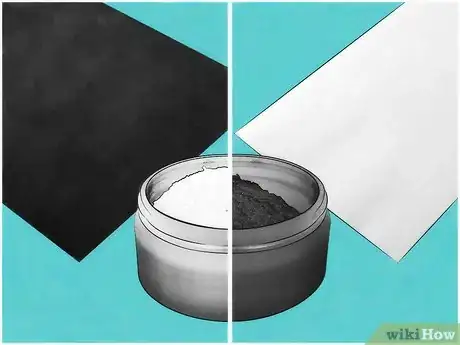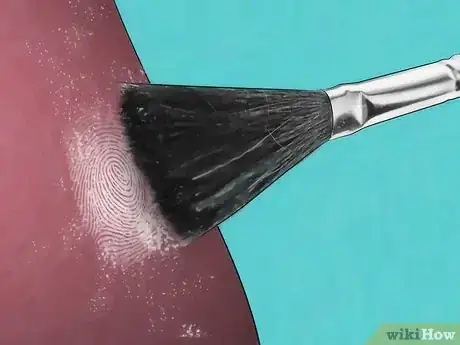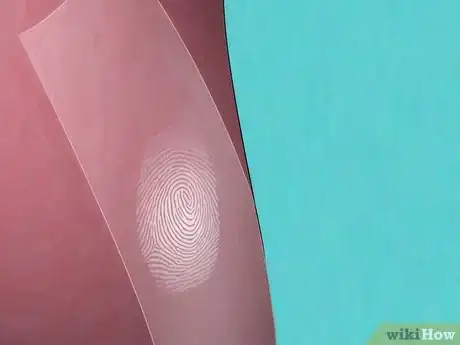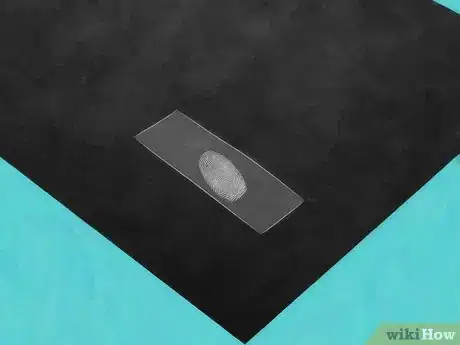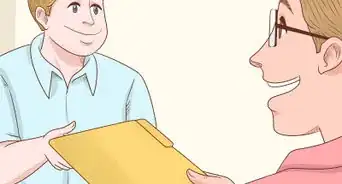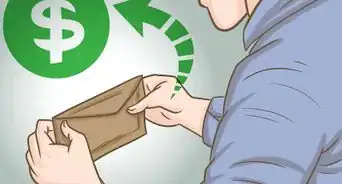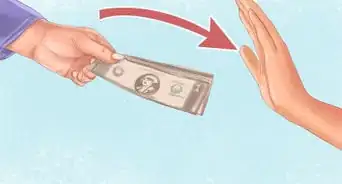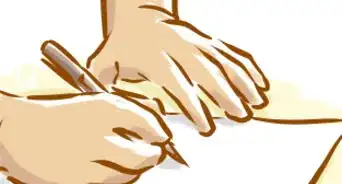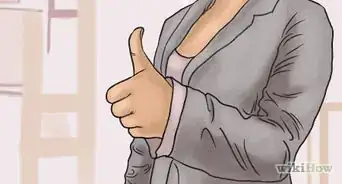wikiHow is a “wiki,” similar to Wikipedia, which means that many of our articles are co-written by multiple authors. To create this article, 46 people, some anonymous, worked to edit and improve it over time.
wikiHow marks an article as reader-approved once it receives enough positive feedback. This article received 19 testimonials and 100% of readers who voted found it helpful, earning it our reader-approved status.
This article has been viewed 337,816 times.
Learn more...
Ever wonder how detectives find people’s fingerprints at a crime scene? It’s actually not as hard as you may think. With some simple supplies and techniques, you can have fun with dusting for fingerprints around your own home. This is for fun only – please do not go to an actual crime scene and attempt to do this – that would be illegal! If you have knowledge of an actual crime, please call law enforcement officials right away. To practice dusting for fingerprints at home, just follow these easy steps.
Steps
Gathering Supplies
-
1Find some fine powder. Fingerprint powder is a very fine powder that is either white or black. White powder is used to dust prints on dark surfaces, and dark powder is used if the print is left on light colored surfaces. Officials use either talcum-based powders for white, or graphite-based powders for black. They also sometimes use special fluorescent powders that glow under black light, if the prints may be especially hard to dust for or are on multi-colored or multi-textured surfaces.[1]
- At home, you can use either baby powder, corn starch, or cocoa powder.
-
2Get a small brush. You’ll want to find a brush with very fine, very soft bristles. A makeup brush or a very small paintbrush will work well. Just be sure that the bristles are soft and not stiff from rinsed in water and reused.Advertisement
-
3Find some clear tape. You can use scotch tape or any other clear tape like packaging tape. Just don’t use duct tape or another colored tape. The tape is for picking up the print after it has been powdered.[2]
-
4Gather some paper. If you are going to use white powder, get black construction paper so the print contrasts with the paper and is easy to see when you put it down. If you’re using a dark powder (cocoa powder or black fingerprint powder), then plain white paper is fine.
-
5Use a smooth, flat surface. If you have microscope slides, these are perfect to use for putting a fingerprint on. If not, any smooth table, chair, appliance, wall, floor, doorknob, or faucet will do.[3]
Gathering the Prints
-
1Press your finger (or fingers) hard on the smooth surface. If you want to make sure your print is even easier to see after dusting it, apply some lotion to your hands before pressing down.
- Practice dusting for your own prints first, and then you can try finding ones that were left accidentally around the house.
-
2Sprinkle a small amount of powder on the print. You’ll want to take just a small pinch between your thumb and forefinger and sprinkle it over the whole print, trying to get some on the whole space that you think was covered by your print. You can also blow the powder around a bit to get the print covered as well.[4]
-
3Gently brush the excess powder off the print with the brush. You’ll want to be very gentle so you leave the fingerprint intact. It’s best to gently lower the brush in a circular dabbing motion than to just swipe it, because swiping may smear the print. If your print gets smeared, you may have brushed too roughly or your brush may not be soft enough. This may take some practice to get it right. You should be able to see the fingerprint clearly in the powder when you’re done.[5]
-
4Place a piece of clear tape down on the powdered print. Use a big enough piece that you can leave room on the corner of the tape to keep holding it (this will make it easier to pull up). Then very carefully pull the tape up. When you lift the tape, the powdered print should be stuck to it.
-
5Place the tape on the contrasting piece of paper. Remember, if you used white powder, use a black piece of paper to capture the print with the tape. If you used dark or black powder, use a white piece of paper.[6]
-
6Go find other people’s prints. Once you have practiced finding your own intentional prints, you’re ready to look around the house for accidental prints- some may be yours but you may find other people’s too.
- Good places to check are doorknobs and the sides of doors, faucets, and tables.
Community Q&A
-
QuestionWhat powder can I use if I don't have fingerprint powder or corn starch at home?
 Community AnswerYou can use baby powder or any fine power like flour.
Community AnswerYou can use baby powder or any fine power like flour. -
QuestionHow do I find out whose print I've taken?
 Community AnswerTake prints of your suspects and compare them to the prints you lifted from the scene of the crime.
Community AnswerTake prints of your suspects and compare them to the prints you lifted from the scene of the crime. -
QuestionCan a glove be dusted for fingerprints?
 Community AnswerYes.
Community AnswerYes.
wikiHow Video: How to Dust for Fingerprints
References
- ↑ http://www.smithsonianchannel.com/videos/how-to-dust-for-fingerprints/17020
- ↑ https://www.scientificamerican.com/article/finding-fingerprints/
- ↑ https://www.scientificamerican.com/article/finding-fingerprints/
- ↑ http://www.hometrainingtools.com/a/dusting-fingerprint-project
- ↑ http://www.hometrainingtools.com/a/dusting-fingerprint-project
- ↑ http://www.smithsonianchannel.com/videos/how-to-dust-for-fingerprints/17020
About This Article
The best way to dust for prints is to sprinkle a small pinch of fine powder on the print. Blow gently to cover the whole print with powder. Dab at the print lightly with a brush to remove extra powder. Press a piece of tape over the print, keeping hold of one corner. Lift it up, and place it on a contrasting piece of paper. Read on for more tips, such as where to find prints!



